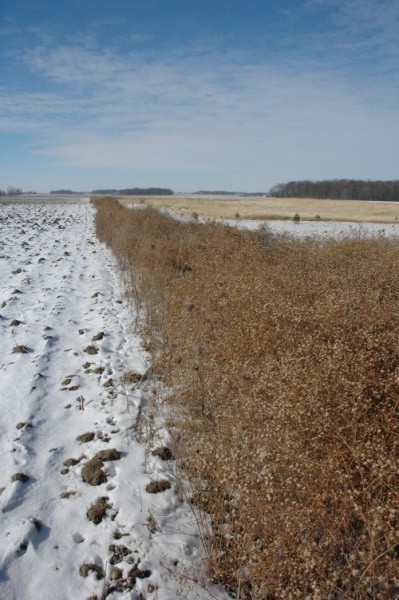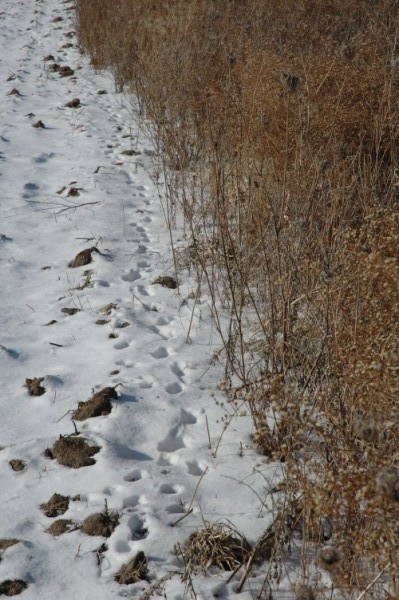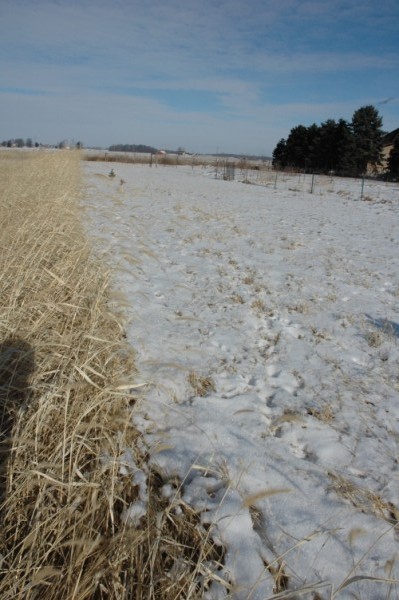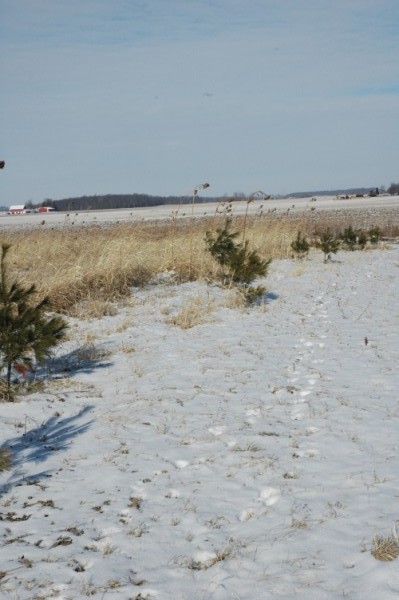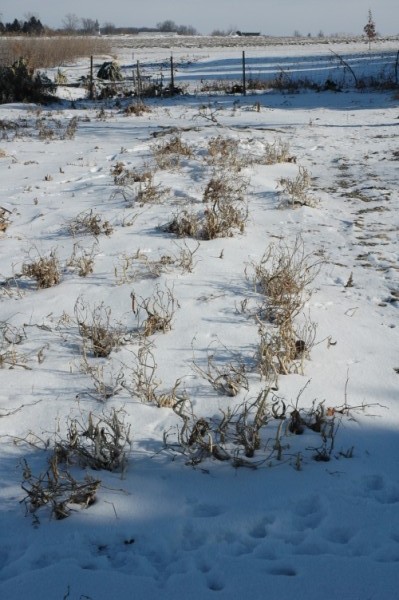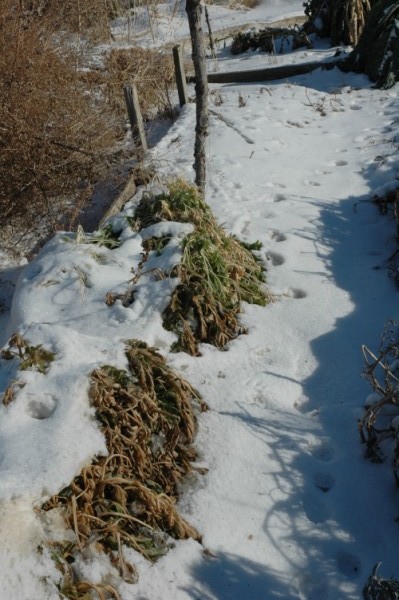Tracks in the Snow
Tracks are found along the “edges”
Greetings, dear reader. We have been getting frequent coverings of snow here in the Greater Bippus Area (GBA). With a fresh layer of snow about every 2 or 3 days, we get a chance to see who has been visiting our little snow covered farm.
In the photo above, we see how some critters use the area adjacent to the windbreak row as a travel lane. This might be done to stay out of the wind, or to have a convenient place to hide from a larger predator. Can anyone in readerville identify these tracks?
The “edge” above is a bit of a windbreak between our property and the neighbor’s. Theirs was planted in soybeans this past season, and they plant right up to the boundary. We leave a strip about 10 feet wide as a conservation measure. We have planted a variety of trees in this “buffer strip“, but so far the weeds are just as tall as the little trees.
Above, there is some grass that ends abruptly, providing another edge where critters like to roam. These tracks may have been made by coyotes.
Travel is a little easier where the taller grass does not grow. Note the sunflowers above that provide some quality feed for birds. The grass area was intended to be a solid block of sunflowers, that didn’t quite work out as planned. Note how the edge creates a travel lane.
Above is my experiment with seed saving. I intentionally left these green bean plants in the ground, allowing the pods to dry on the plant. I will (eventually, don’t rush me) pull these plants, shuck the pods, and test my success in planting them in the spring. Do any of my dear readers have experience with this? Inquiring minds want to know. I will share my success story experience with these bean seeds in the spring. In the meantime, notice how the animals use the area as a travel lane.
What the astute observer may have noticed is a touch of laziness by the gardener above. Generally, all crop plants are removed at the end of their “economic lifetime”. This prevents the plant from extracting nutrients. In the photo above, well, the celery may provide *ruffage* for the soil come spring. ‘Nuff said.

